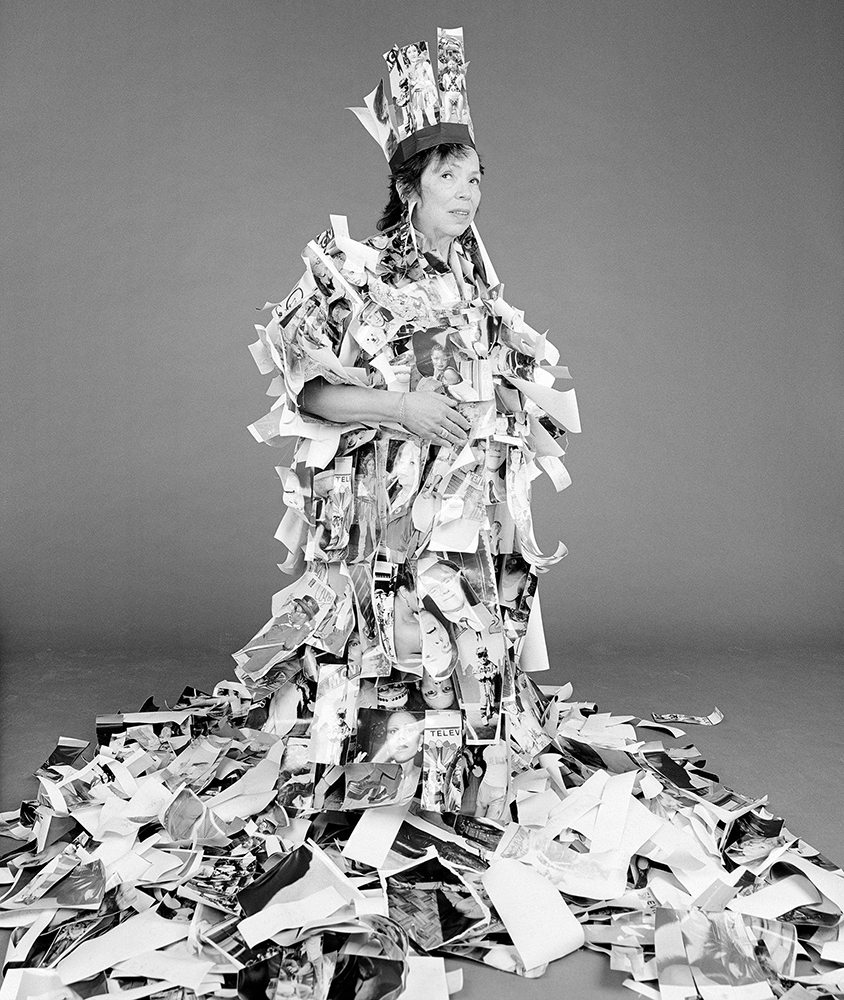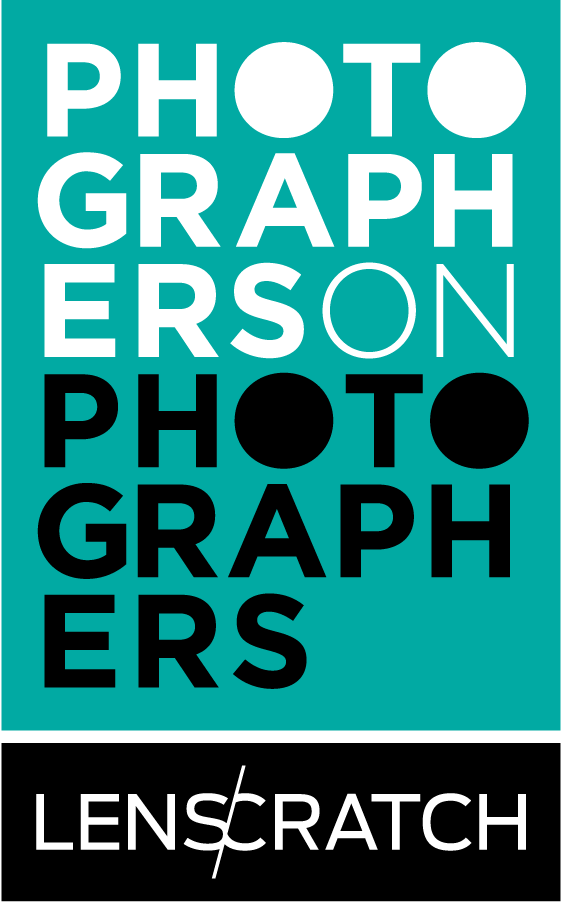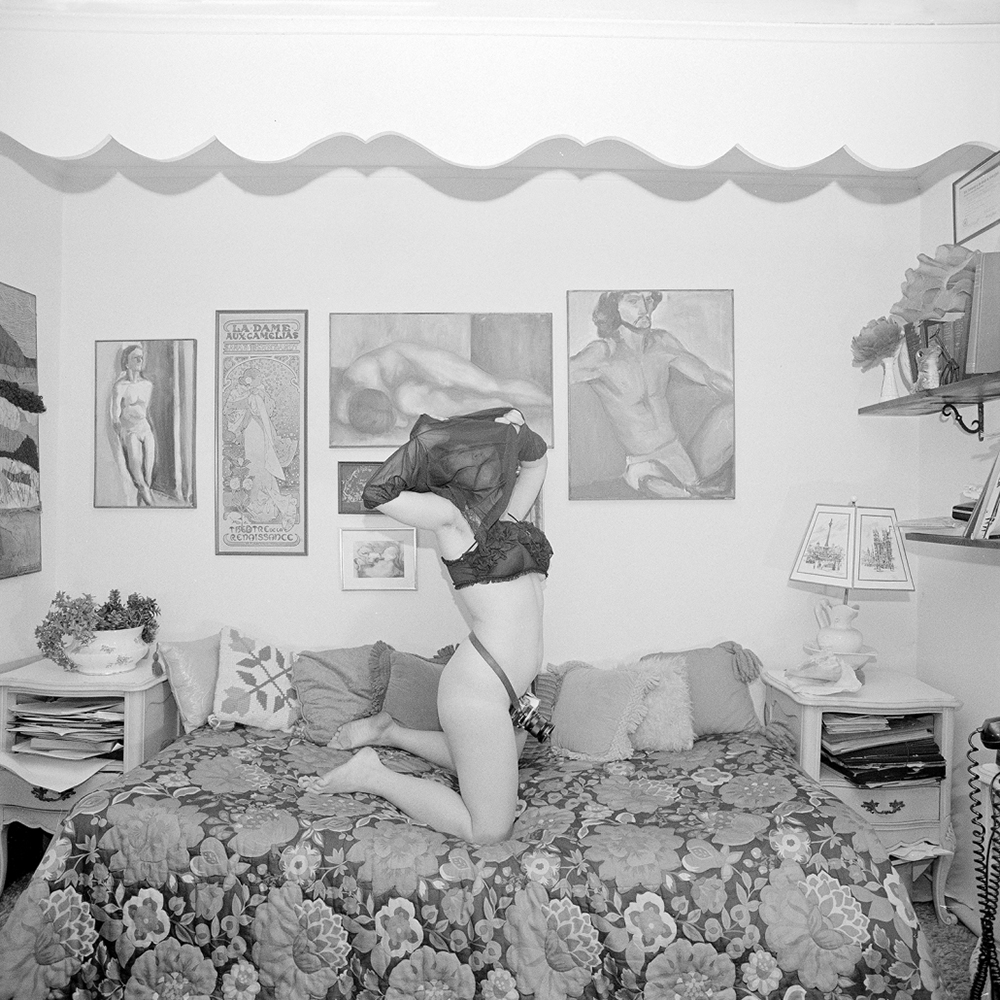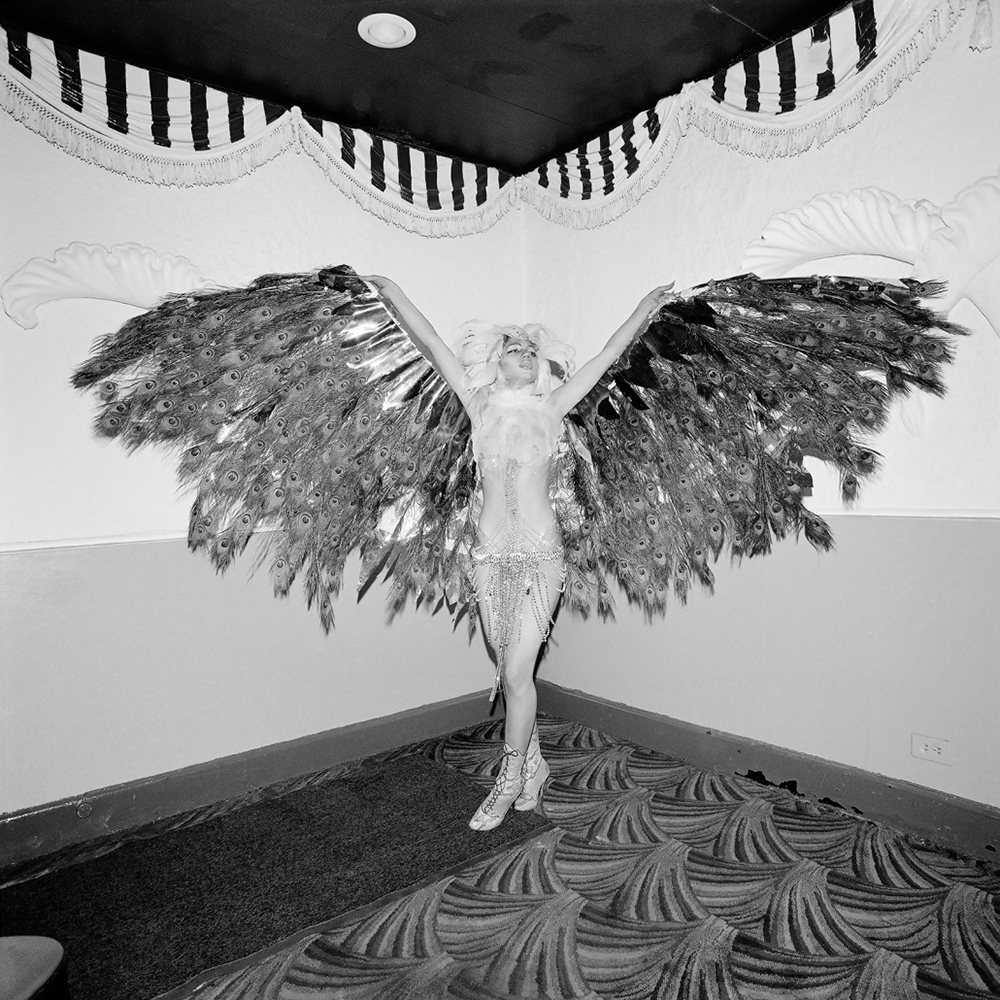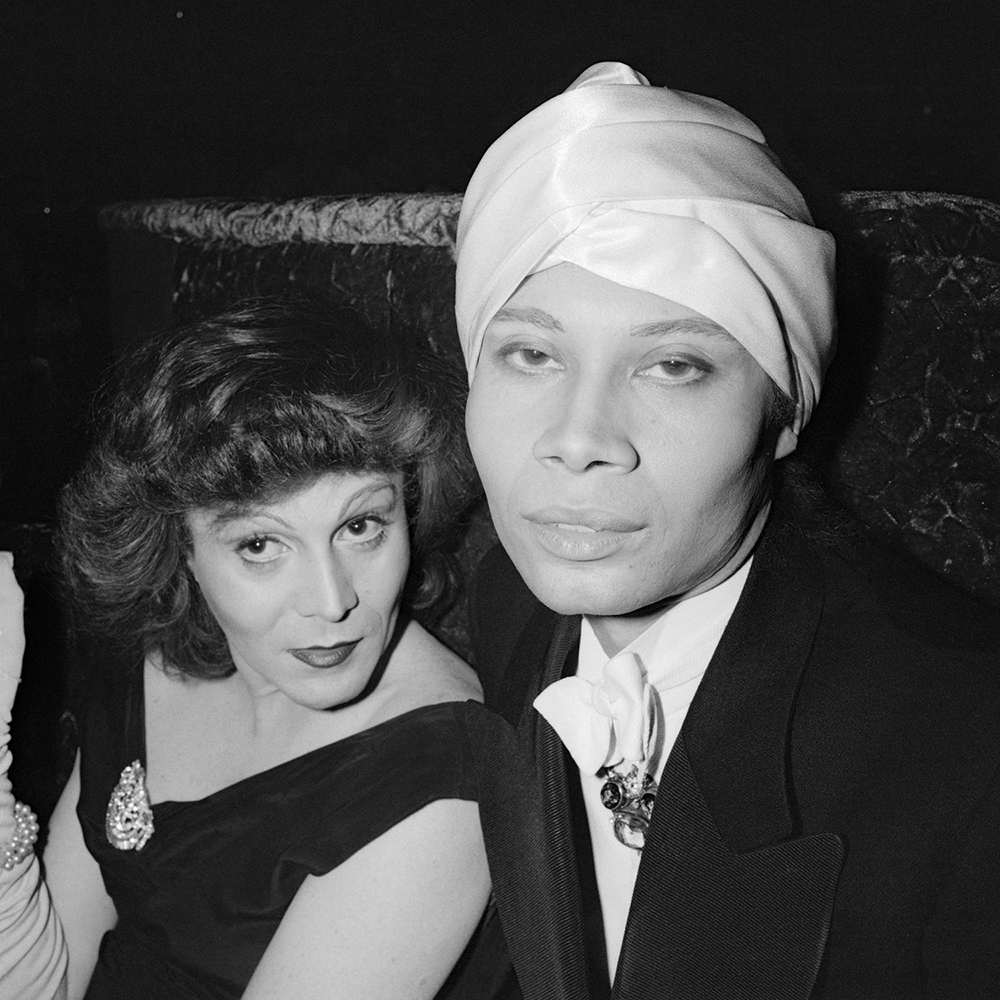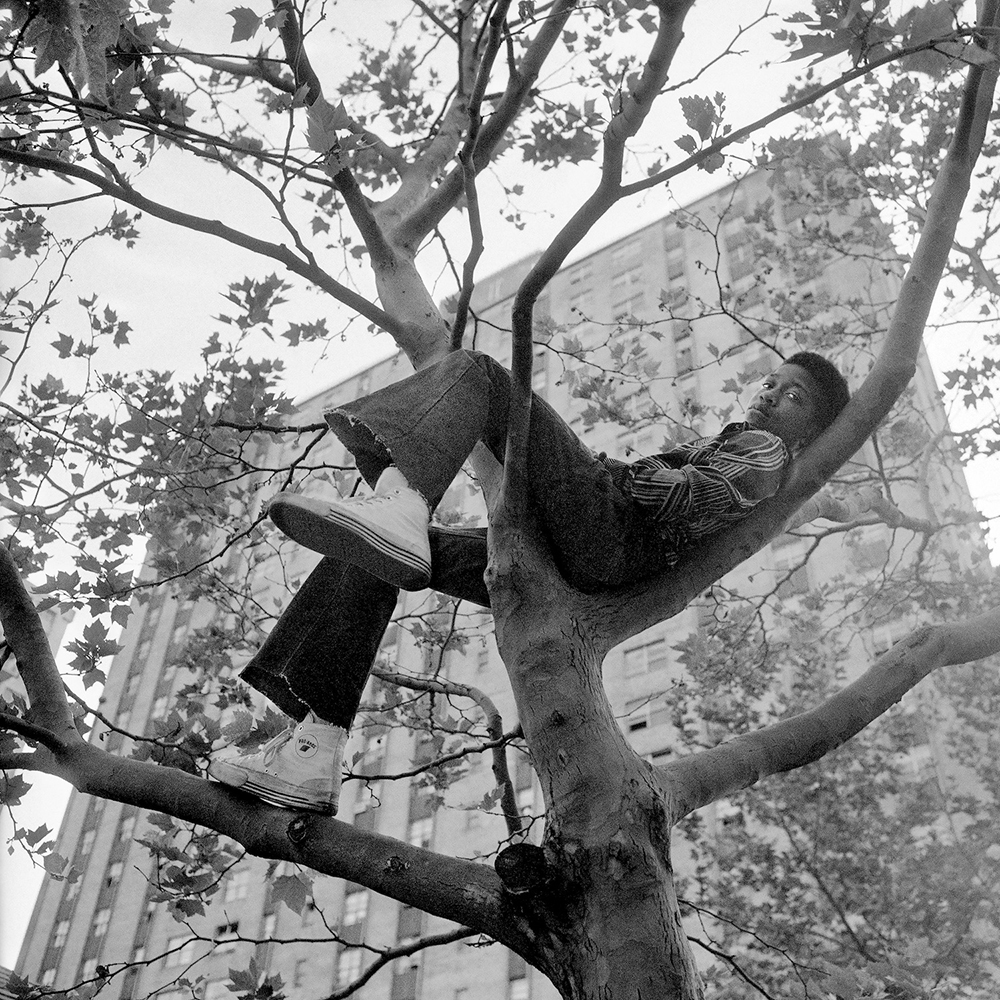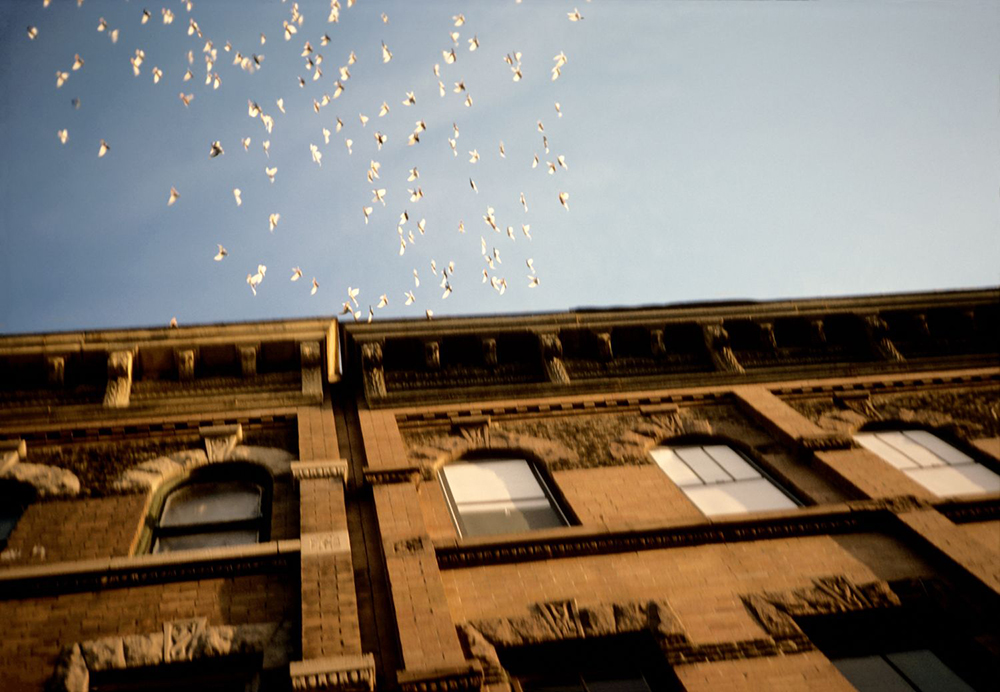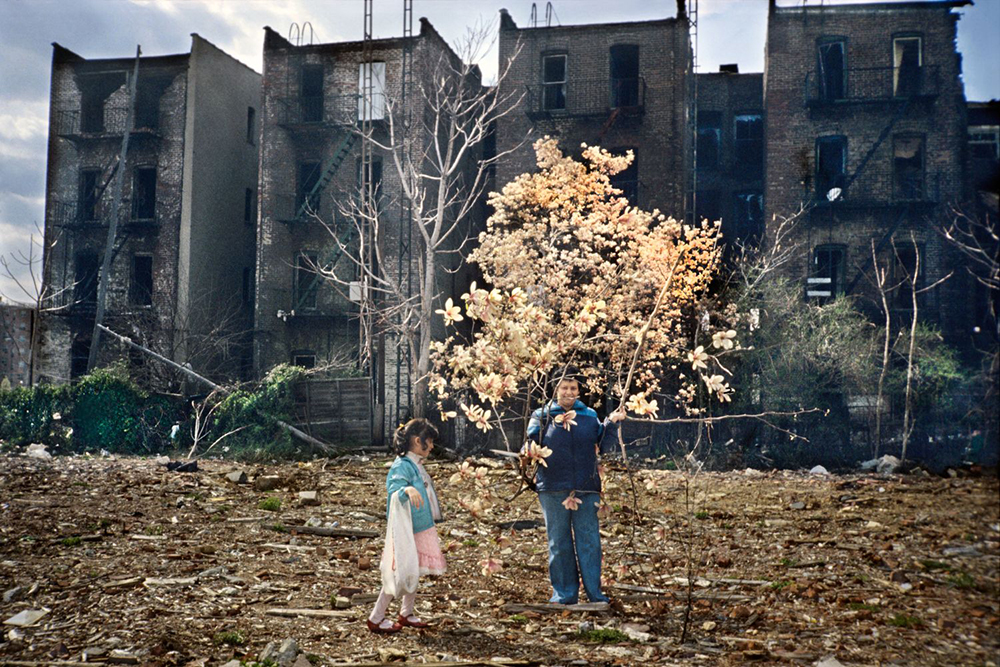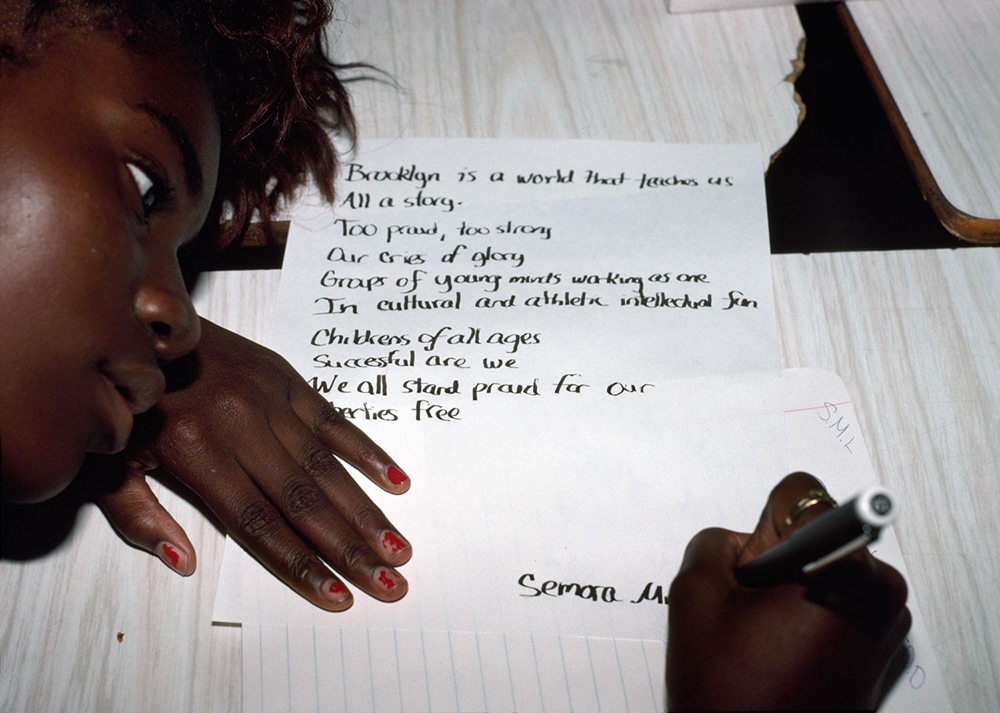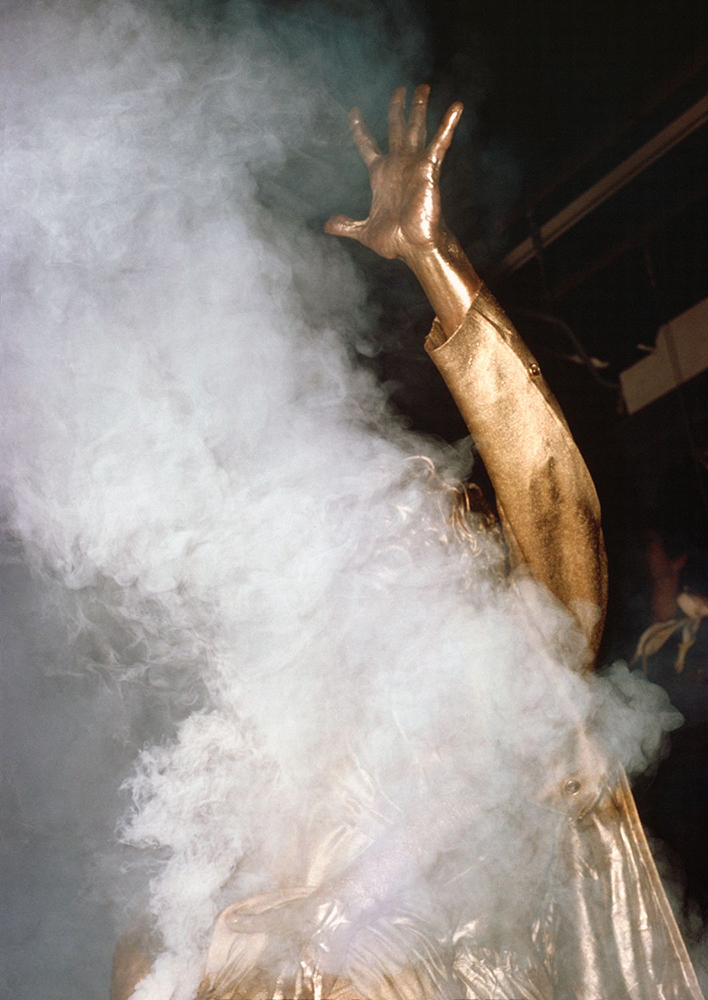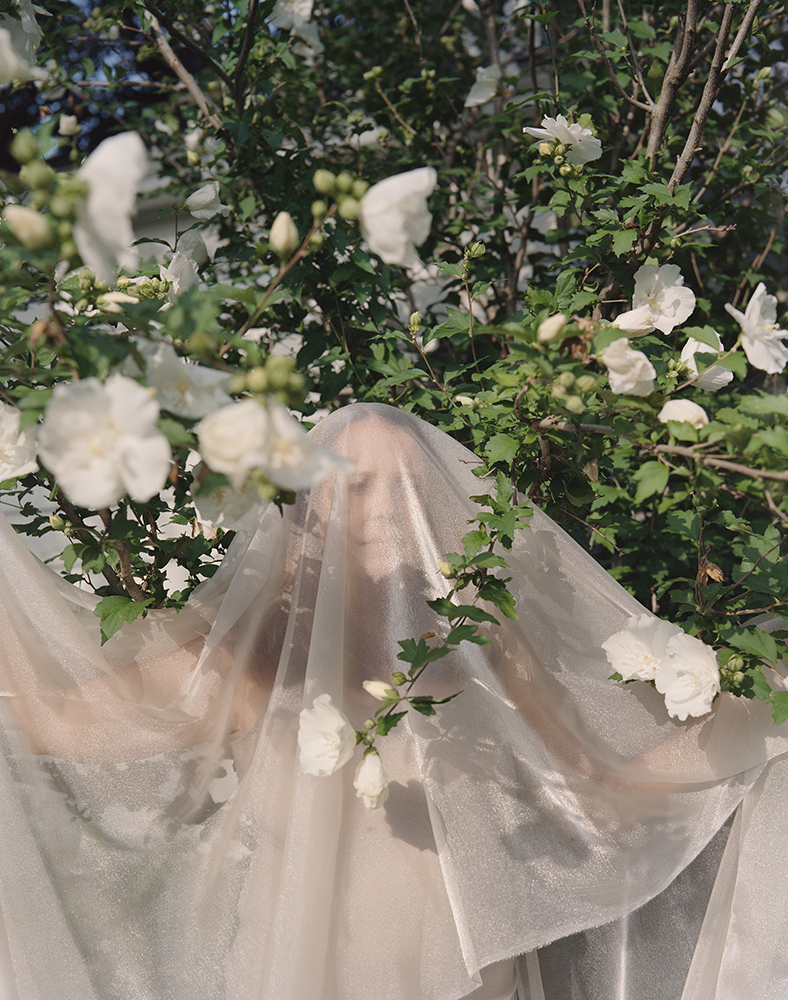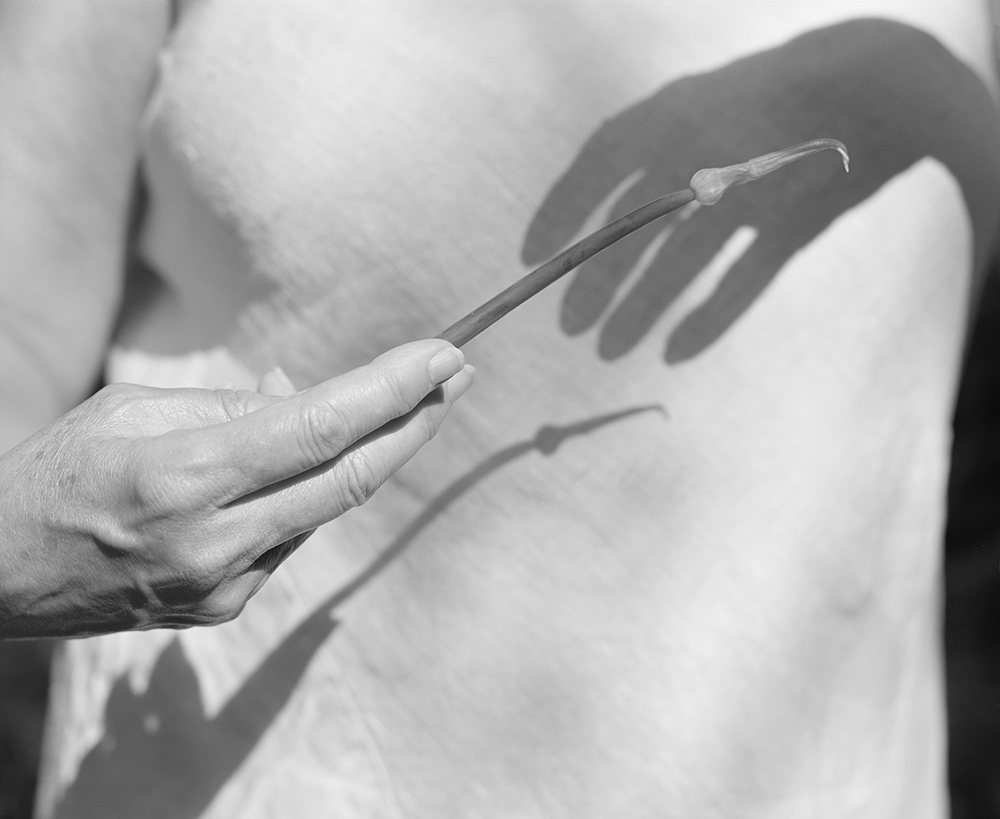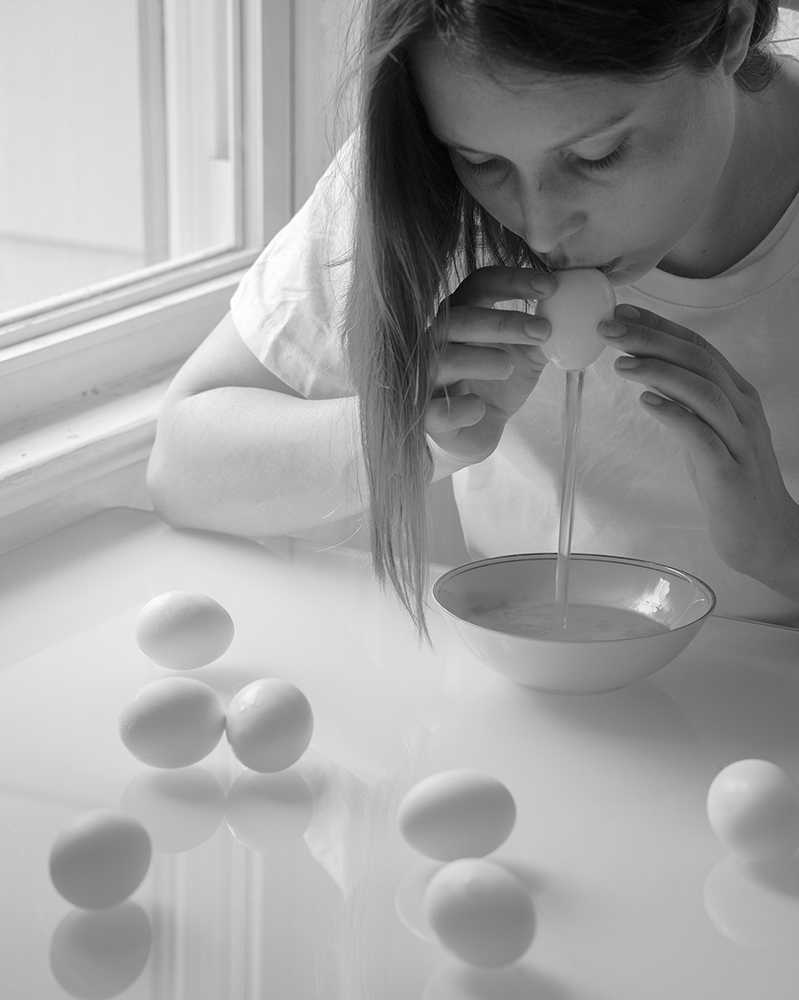Photographers on Photographers: Amrita Stützle in Conversation with Meryl Meisler
Every August, we run a month of photographers interviewing other photographers, but this year we reached out to our 2020 25 Photographers to Watch and asked them to interview a photographer who has inspired their journey–a hero or a mentor. Today we share Amrita Stützle’s interview with the iconic photographer, Meryl Meisler. Follow along this month for wonderful insights and interviews. – Aline Smithson
After meeting Meryl Meisler during her residency at Light Work in 2019, I instantly knew I wanted to know more about her and her captivating work. I fell in love with the energy that exudes from her pictures—full of longing and desire, humor and wit—they encapsulate a magical queer perspective. Telling real life stories in such a way that illuminates how life is not only worth living, but also celebrating.
Meryl Meisler was born 1951 in the South Bronx and raised in North Massapequa, Long Island, NY. Inspired by Diane Arbus, Jacques Henri Lartigue as well as her dad Jack and grandfather Murray Meisler, Meryl Meisler began photographing herself, family, and friends while enrolled in a photography class taught by Cavalliere Ketchum at the University of Wisconsin, Madison. In 1975, Meisler moved to New York City and studied with Lisette Model, continuing to photograph her hometown and the city around her. After working as a freelance illustrator by day, Meisler frequented and photographed the infamous New York Discos. As a 1978 CETA Artist grant recipient, Meisler created a portfolio of photographs which explored her Jewish Identity for the American Jewish Congress. After CETA, Meisler began a three-decade career as a NYC Public School Art Teacher. Upon retirement, she began releasing large bodies of previously unseen work, including three books, A Tale of Two Cities: Disco Era Bushwick (Bizarre, 2014), Purgatory & Paradise SASSY ‘70s Suburbia & The City (Bizarre, 2015) and New York PARADISE LOST Bushwick Era Disco (Parallel Pictures Press 2021). She’s only just begun to reveal her huge archive. The best is yet to come. Meryl lives and works in New York City and Woodstock, NY. ClampArt represents her work.
Follow her on Instagram: @merylmeisler
Amrita Stützle: Let’s start off with something fun. What’s your favorite song to dance to?
Meryl Meisler: “I Feel For You” and “I’m Every Woman” by Chaka Khan—when those songs play on my music mix, I get up, take a short break from what I’m doing and dance by myself.
AS: I love that. I’m sure you have danced to some pretty amazing music in many amazing places! There is a strong sense of female empowerment in those songs. This brings me to how I view a lot of your artwork, where I sense the camera serves as a tool of empowerment. One of my favorite images you have made is the self-portrait of you in your Sassy 70’s work, the camera is slung low around your waist, some of your paintings and a poster of “La Dame Aux Camelias” is in the background. What was it like to make this picture?
MM: So that image was taken on Thanksgiving in my childhood bedroom in 1976, I had just graduated college and those are my undergraduate school paintings on the wall. I still actually have those nightstands…and look at the telephone! I’m very proud of this image. I have a vintage print of it but had never exhibited it nor shown it. I chose it for my Sassy 70’s book because it is quite wild and empowering. When I showed it to Steven Kasher, he wanted to exhibit it, and so having it in an exhibit, in a real gallery was somewhat surreal. It’s definitely me! It’s daring.
AS: It’s interesting, there is a lot of vulnerability in this image, but there is also an element of performativity. Perhaps, a way to create a barrier for the vulnerability.
MM: It is definitely performative. My favorite thing to do is go to Broadway shows. I was fortunate to go to them as a child and my family would get half price tickets and go to see shows a lot. It’s definitely the setting of the stage. I would use the family home as a stage set, and I would draw from family events which I acted out. This was taken the year after my parents separated, which was in 1975. Which is very important because I came out in April, April Fools of 1975. So that was me flirting with an idea, but really it was more about photography. The power of photography and the empowerment it gave me. And all those years of tap and ballet at Baron’s Dance Studio in Long Island.
AS: Amazing. I’m really interested in the way you reference classical works of literature in your work—Dicken’s A Tale of Two Cities, Dante’s Divine Comedy, and most recently Milton’s Paradise Lost. Can you talk a little about how these allegorical texts are signified within and structure your work?
MM: Well, for the first book, A Tale of Two Cities: Disco Era Bushwick, I had this epiphany, that these two bodies of work—of NYC night life and my life in Bushwick collided. It hit me immediately that it was the contrast of the worlds within my life that I was interested in. Boom. The funny thing was, as a child in school, I was assigned to read it many, many times. I’d look at Cliff Notes. I’d get up to the point about Miss Havisham knitting and then I would never finish it through. I finally read it from beginning to end the year before the pandemic and I really, really love the story. I feel like when working on the books, I am referencing classics because this is my memoir, this is my story. It’s just one little person’s life. All these great works of literature are based on fictional characters, but they could be real people’s life stories.
MM: For my earlier work which includes my Long Island family pictures, I also knew the title immediately— Purgatory and Paradise, based on a significant memory. When I was around six or seven years old, I had this defining moment where this little friend on the block stopped me out of nowhere while playing and said, “You can never go to heaven” and I was like, “What do you mean? I’m a good girl.” She replied, “Well because you’re Jewish. The best you can do is go to purgatory.” “What’s purgatory?” I’d never heard the word, I didn’t know what it was, “Well, because you’re not Catholic you’re not going to go to heaven.” And it was this moment, I experienced my first direct encounter with anti-semitism to my face. I realized when we were growing up, I was never invited into this house, so I was treated as other. When I moved to New York City, I worked as a freelance illustrator. With my first paycheck, I bought an antique volume of Dante’s Paradise and Purgatory illustrated by Gustave Doré. I literally needed to own it. I needed to own the moment, of not being the norm.
So, the third one, Paradise Lost, seemed natural to just follow the flow. The classics seem to work, because I think my photographs teach stories, almost like biblical texts. They teach stories in a very simplistic and yet complex way.
AS: I’m excited to see the new book! I’m really interested in how you use these classical narratives and need to own them. In a way, it’s a reparative read of these classical texts. I took a graduate early modern literature class in which we read Paradise Lost, and I loved it. There are so many fascinating reparative and queer theoretical essays on challenging literature that really changed my perspective. What fascinated me about the text, especially the first few chapters, is how Lucifer is the seductive protagonist and God is a relatively boring character. To me, your pictures are very seductive. Can you talk about the role of seduction in your work?
MM: That’s an amazing question. I’m thinking about many things. I chose to photograph moments that I found exhilarating or exciting. At the time, the disco scene was getting pretty grungy, wilder and darker, and also brighter. My buddy Judi Jupiter was a bartender at a go-go bar and brought me. I thought it was all very interesting and exciting, so I got a job as a hostess which I worked two years part time. I had sketchbooks and got to know the other girls, the dancers, the hostesses, even the customers and I would keep records. Eventually, I brought my camera to the locker room and asked if I could photograph the dancers. I was fascinated by this nightlife, absolutely fascinated, and seduced. When I would go out at night, I had my camera on me most of the time. This was my world that I was experiencing and enjoying and part of, capturing it. I wasn’t even aware of the power of it. But in the taking of a picture, what I was seeing was seducing me and that is what I was capturing. I was fascinated by it as well.
AS: In much of queer theory, queerness is marked by a fluidity, by a shift in orientation, a rejection of static form. I’m interested in how you view queerness in relation to your work?
MM: I have a queer eye view, a Meryl eye view that I’ve always had. I knew as a child that I saw things differently than other people. I would look up and remember looking at the lights and seeing little bubbles in front of my eyes and saying, I can see like a microscope, I could see tiny organisms with my eyes. I also saw funny. I saw different. No matter how I photographed people, they came out funny, I see funny.
AS: How do you view your images as shifting over time?
MM: Time has given me perspective of looking at what I have and understanding what a very strong image is, the energy that lives in art. It’s been a process. And you were part of it when I was going back into the darkroom printing gelatin silver, I really think there’s a lot more life in them. And I’m very thrilled that other human beings find them interesting and enlightening.
AS: What I find fascinating in relation to temporality, is that the pictures are simultaneously very much about a specific time and place, but also speak beyond a specific time and place. I think temporarily they’re really time specific but also timeless. Would you agree?
MM: I agree. I want to photograph the same things now I would have taken then. It’s odd that people have a way of seeing, and I find this no matter what or where this is what attracts me, or this is what I want to capture.
AS: We have both photographed our families, more specifically our mothers. Can you talk a little bit about what that experience was like?
MM: My mother was my best friend. People think I’m energetic…she was like a nuclear reactor, really a dynamo and an intensely wonderful person. And she would let me photograph her. I took a picture in the 70s of her reading a newspaper article titled “A Scholarly View of the Jewish Mother”, she’s wearing her hair in curlers and wearing glasses. I was a photographer through CETA, the Comprehensive Employment Training Act, it was like the WPA of the 1970s. I submitted my Long Island photographs to try and get a job and I was hired for the position with the American Jewish Congress to document Jewish New York. My personal project was to look at my family roots and discover more about my family heritage and coming to America. I also documented Jewish New York street life alongside the photographs of my mother. For an exhibition I was in, there was a female administrator who attempted to censor the image of my mom reading the newspaper because that administrator thought it was antisemitic. This upset me and I successfully fought to have the photo in the exhibit. I have intense pride of my heritage, and I love my mother and my mother loved that photograph.
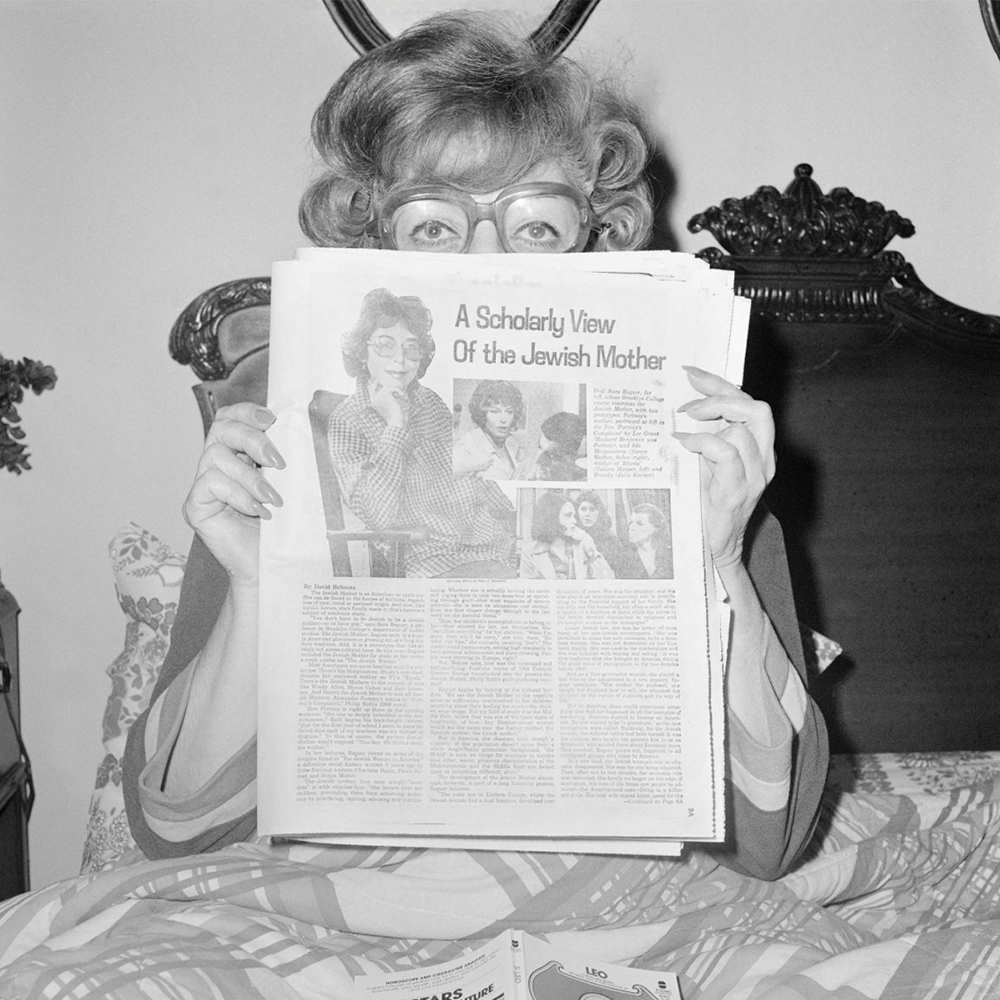
© Meryl Meisler, Mom Reading A Scholarly View Of the Jewish Mother, North Massapequa, NY Thanksgiving 1978
AS: You compared your New York PARADISE LOST Bushwick Era Disco work to “love letters filled with compassion, humor and angst.” I love this idea of the love letter as a way to position the work. Could you talk a little more about this notion of the love letter?
MM: They are little love letters and love notes of memories, an homage to the people I photograph. I love the images. The memories are special moments that I care about. Like be my Valentine.
AS: As we are emerging out of the pandemic, what are you looking forward to?
MM: We just got to see each other a few days ago, that was my first not immediate family grouping of people, that’s true joy. I’m looking forward to seeing people in real life, and experiencing real life is truly amazing. I’m looking forward to going to live theater again. To seeing friends, just sharing a coffee and hugging. I also want to travel more. I’m not well traveled. And you know, I was born in 1951…you do the math. I want to stay healthy. I’m supposed to have a show in Berlin in October, so I want to go there. I’m looking to step gracefully into to it. It’s kind of like the Wizard of Oz, like we’re waking up from some kind of weird dream, but it’s not a dream, and a lot of people didn’t survive it. There’s a renewed appreciation of how beautiful life is. I’m excited about stepping out on earth again and meeting old friends and new ones. There’s a lot of work to be done, shows coming up and another book of my street photography from 1973 to 2021 that I have to focus on. But I love doing projects. I’m looking forward to balancing these things. That feels healthy and right to me.
AS: I love the notion of stepping out on earth again. Beautifully stated. Thank you so much Meryl, you are an inspiration and such a joy to talk to.
Amrita Stützle is an Austrian-American artist and educator with a focus on lens-based media. Her work investigates how history informs the present and future through nonlinear time. In her practice, intimate investigations of identity intersect with cultural explorations on gender, ritual, labor, and environment. She has worked at several art non-profit organizations including Light Work, Philadelphia Photo Arts Center, Slought, and the ICA Philadelphia. She was a 2018 Saltonstall Artist-in-Residence fellow and a 2019 Magenta Foundation Top 100 Emerging Photographers Winner. She is a recipient of The Sachs Program for Arts Innovation’s Student Grant and a 2020 Lenscratch Student Prize Winner. Her work has been exhibited nationally and internationally, as well as published in The New York Times, Oranbeg Press, and Ain’t Bad publications.
Follow her on Instagram: @amritastutzle
Posts on Lenscratch may not be reproduced without the permission of the Lenscratch staff and the photographer.
Recommended
-
Shinichiro Nagasawa: The Bonin IslandersApril 2nd, 2024
-
The International Women in Photo Association Awards: Lorraine Turci: The Resilience of the CrowMarch 16th, 2024
-
The International Women in Photo Association Awards: Rayito Flores Pelcastre: Chirping of CricketsMarch 14th, 2024
-
The International Women in Photo Association Awards: Louise Amelie: What Does Migration Mean for those who Stay BehindMarch 12th, 2024
-
Brandon Tauszik: Fifteen VaultsMarch 3rd, 2024

